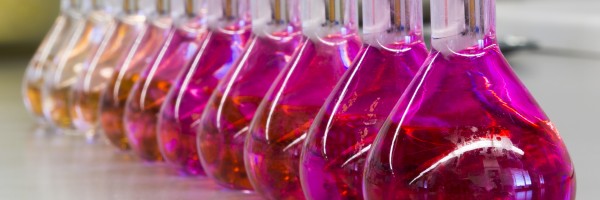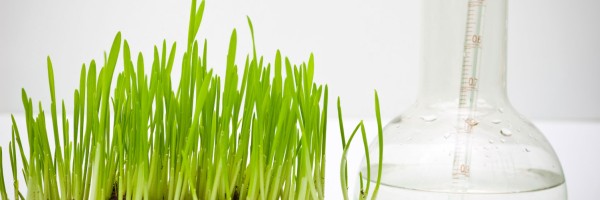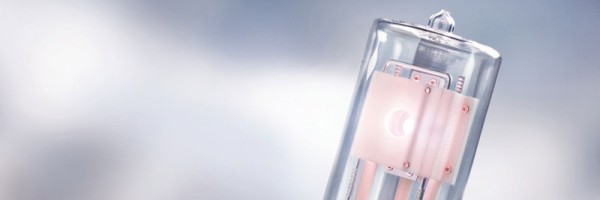Laboratory analytical equipment is required to offer the highest levels of accuracy and precision of analytical results. Heraeus offers a wide range of optical light sources with state-of-art-technology for analytical instruments. They are designed for long life, maximum reproducible precision and stability. Heraeus also provides power supplies for various specialty analytical lamps. Since the electric properties of the power supply have a significant influence on the operation of the lamps, the power supplies are tuned to the specific requirements of each lamp to always achieve the best possible performance for your laboratory equipment.
Laboratory measurement
Applications

Atomic absorption spectroscopy is a proven standard method for detecting arsenic in drinking water, the metal contents of ores or aluminium in food. High-quality Heraeus hollow-cathode lamps are used to determine elements in samples of liquids and solids qualitatively and quantitatively. The measuring principle is based on the absorption of light when the sample is vaporised and analysed in the gaseous phase.
Lamps for atomic absorption spectroscopy (AAS):
Gas chromatography brings the sample in a gaseous state and leads it through a column. According different interactions with the column the sample is separated in its constituents. The different components appear at the end after different times in a detector. The detector shows then what was inside the sample or how much.
Lamps for gas chromatography:
(High performance) Capillary Electrophoresis is an analytical separation method. The sample is introduced into a capillary. An electrical field separates the sample into its Ions depending on the size, shape and charge.
The substance, which is now broken up into its individual constituents, can be detected by a UV-Vis detector that measures the absorption of the components.
Lamps for High Performance Capillary Electrophoresis:

High-pressure liquid chromatography is an analytical technique used to check the purity of pharmaceutical drugs and detect contamination in food. Heraeus deuterium lamps provide the light sources for these highly sensitive analyses and help determine traces of undesired contamination such as melamine in milk powder for babies.
They generate a continuous spectrum with wavelengths ranging from UV to visible light, making them the ideal light source for high-precision absorption measurements in the laboratory. HPLC is based on a separation method in which the substance to be examined is pumped through a so-called separating column at high pressure. Due to the different kinds of interaction of the substances with the materials in the separating column, the individual substances exit the column at different times, which enables separation of the fractions.The substance, which is now broken up into its individual constituents, can be detected by a UV/VIS detector that measures absorption in the UV range.
To enable lowest possible detection limits and highest resolution in modern analysers, the latest generation of Heraeus deuterium lamps provides about 50% higher intensity, with two to three times lower noise compared to conventional deuterium lamps. This makes them ideal for use in UHPLC (ultra-high performance liquid chromatography) detectors which are used, for example, in blood tests to find drugs.
Lamps for High Pressure Liquid Chromatography
Mercury is a very toxic substance and often a side product of other manufacturing processes. For example, in cement production it is likely that mercury is generated. To avoid a high exposure to the environment mercury needs to be monitored during the process.
A common way to detect mercury is to measure light absorption with a mercury lamp.
Lamps for Mercury analyzer:
Thin layer chromatography is used to separate a non-volatile sample. After the sample has been applied on the thin layer plate the solvent mixture is drawn up the plate by capillary action. Due to different interactions between the sample and the plate, the sample is separated into its different components. Some of the components can’t be seen with visible light and need to be projected by ultraviolet light. The illumination with UV light causes fluorescence and makes the spots visible. The different components can now be identified or quantified.
Thin layer chromatography is a very quick and simple method to determine the purity of a sample or to control a chemical process.
Lamps for thin layer chromatography:

UV-Vis spectroscopy is a method to measure the absorption of visible light (390 nm to 800 nm) and UV light (190 nm to 390 nm). The substances are measured in solution contained in a quartz cuvette. Using a spectrometer, light with a wavelength range of 190 nm to 800 nm is radiated through the cuvette and absorption spectrums are recorded. Different broadband UV-Vis light sources can be used. Mercury lamps that emit just a single line spectrum are also used for the wavelength calibration or detecting mercury.
Lamps for UV-Vis spectroscopy:
Further information



